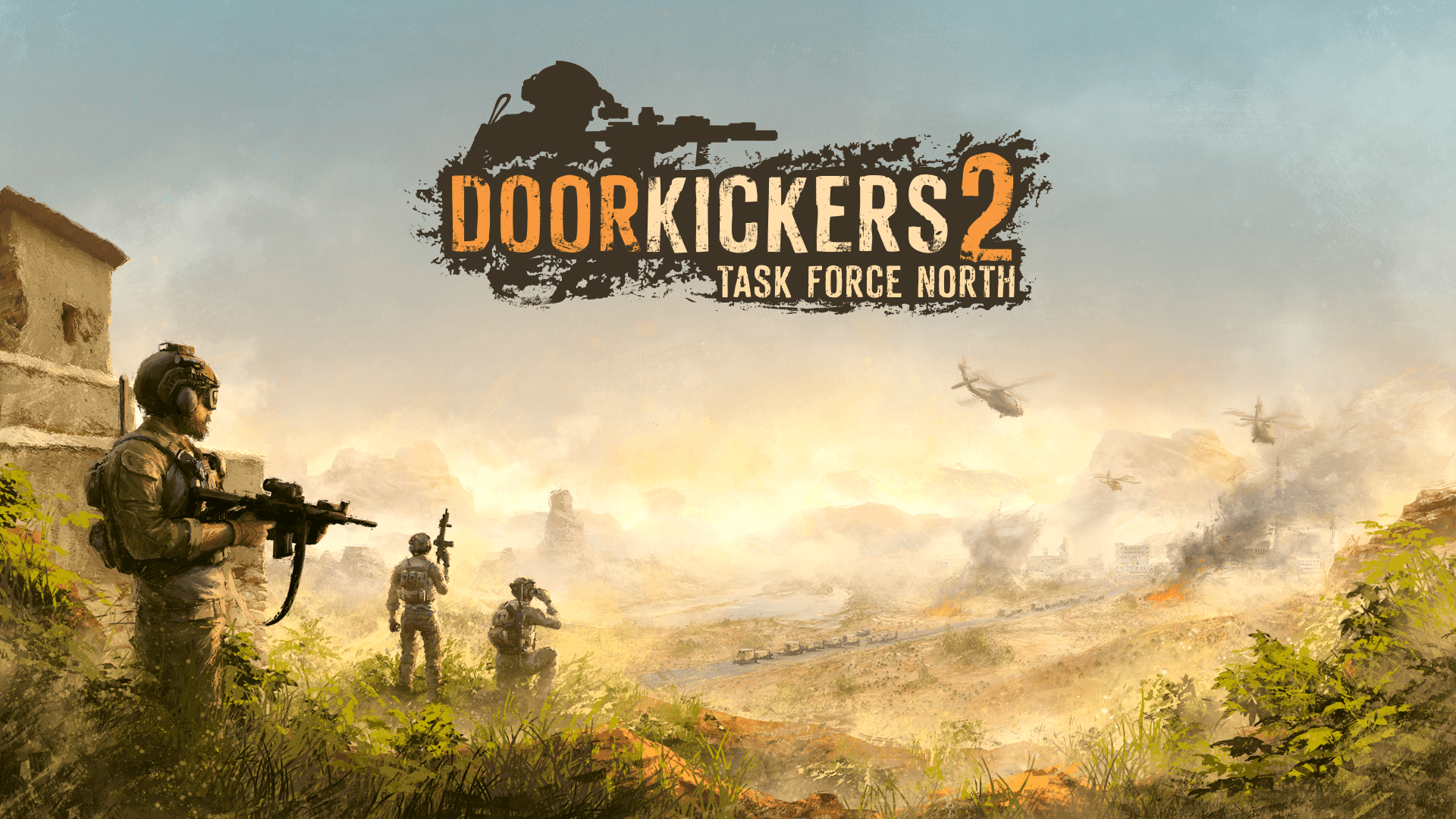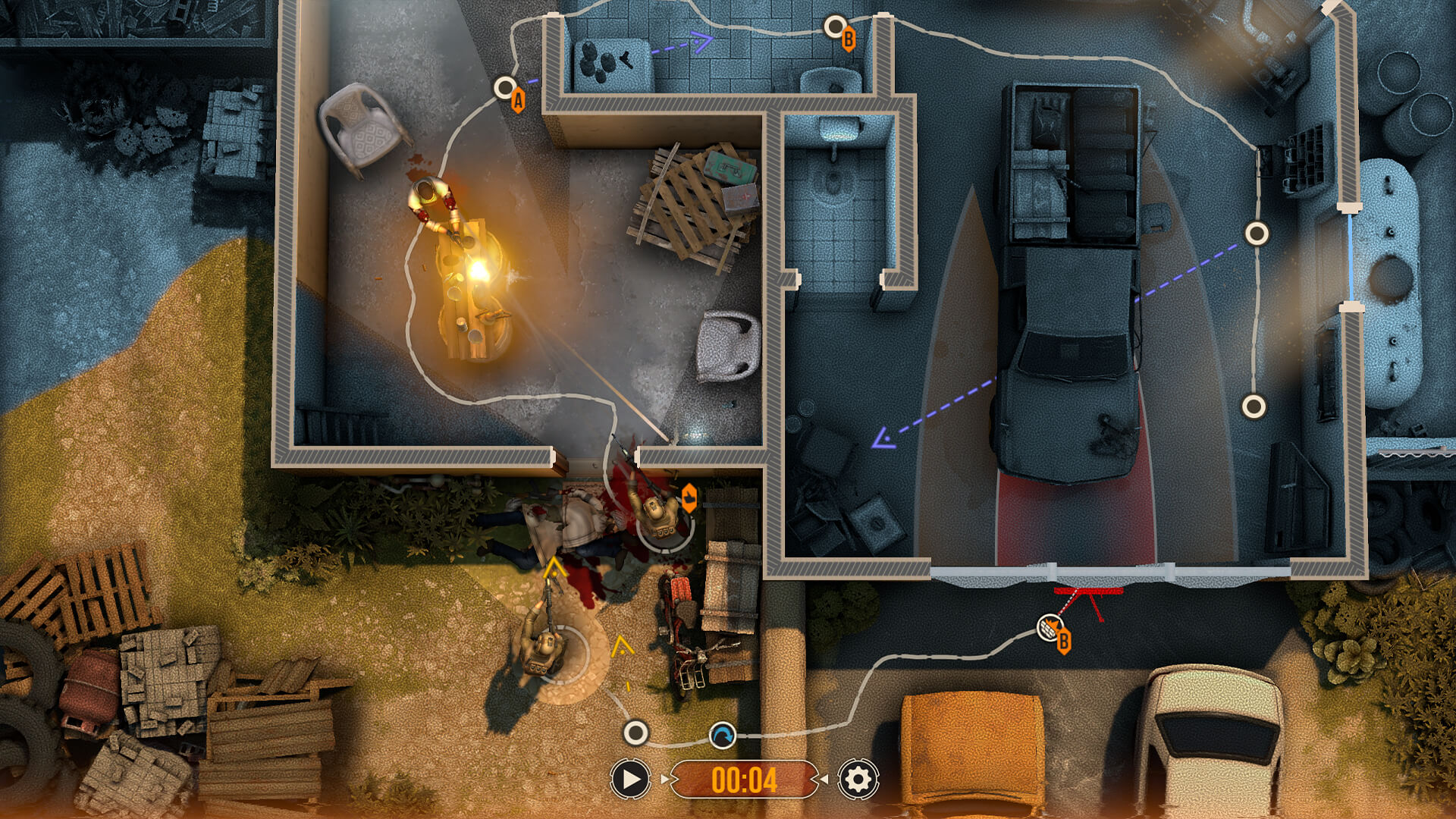To say Door Kickers 2 is simply a tactical game is a disservice. KillHouse Games have taken all the best bits of the tactical and strategy genres and distilled them into one of the most refined and occasionally aggravating experiences I have had with the genre in years.
Even with our broad approach to the term “thinky” here at ThinkyGames, you may be a bit surprised to see a game like Door Kickers 2 here. I can assure you that this Early Access tactical strategy game embodies the thinky spirit through and through and will give you a brain-boggling challenge.
Door Kickers 2 (let’s call it DK2) has one element that permeates the whole game, from its missions to its gameplay. That aspect is allowing the player to make complex decisions, and I can honestly say this game has it in abundance — for better or worse. The game takes place in the fictional country of Nowheraki, where you’ll take control of a squad of elite soldiers and operatives to complete various challenging missions. Whether taking down hostiles or conducting a stealth-based covert rescue, you’ll need to use your team to plan and effectively execute your task. Where the game starts to get thinky is in the multitude of approaches and puzzle-like options it offers you to accomplish these goals.
Unlike other tactics games that typically use a turn-based system, action points, and grid movement, DK2 opts for a much more free-flowing approach. You move your squad members in real-time (with a nifty pause button) with near complete freedom by selecting them and dragging your mouse to draw a path they will follow, with no limit on the distance or the route you choose to manoeuvre through levels. You also have a ton of options on what your troops can do and how they do it. When right-clicking on a soldier or along their selected movement path, a circular menu of orders can be issued to them — down to the most specific details. From choosing what direction they face during movement, whether to slam doors down or to open them quietly, crouching for less noise, or making a mad dash for cover— all of it is at your disposal. These can be used in any order whenever you choose to help craft your approach. It’s a level of tactical and strategic freedom that boggles the mind with possibilities: the sheer amount of decisions you can make either on the fly or through meticulous planning is staggering.
The complexity and depth only increase when you get into the customisation. When starting a mission, you have distinct teams and units to choose from, each with different playstyles and quirks. The “Rangers” currently offer the most robust selection of units: Assault, Support, Marksman, and Grenadier. Each of these comes with strengths and weaknesses, fitted to fulfil a different role in your squad and missions. On top of that, each soldier has their own loadout, which can be customised from top to bottom with heaps of weapons with different stats. Completing missions and earning Stars will unlock equipment, giving you even more options. You’re also not restricted on how you construct your squad, meaning you can try out a whole team of snipers or heavy gunners if that tickles your fancy.
It’s encouraged and, at times, necessary to try different squad setups, and the vast flexibility makes for a meticulous yet engaging exercise in planning and experimentation. Want to go for a fast and furious surge of action or slower, more precise stealth, or maybe an oddball mix of the two? Whatever your style, you can do it here. It’s a shame then that outside the Rangers, the other squad options — the stealth-focused CIA and militant Nowheraki SWAT — were less exciting offerings with fewer options. However, I imagine this could change during the game’s time in Early Access.
Level design and missions share this same experimentation and openness in their design. Every level is a well-crafted sandbox of different buildings and environments to traverse and dissect, each requiring careful consideration and adaptive thinking. One mission may favour a smart, tactical approach by breaching doors and smashing windows for a surprise attack and misdirection. Others may have blind spots you’ll need to consider or take place in tight corridors where the slightest noise could alert the whole area. Each feels uniquely challenging and rewarding, and they are made better by the simple fact there is no clear-cut, right or wrong answer to complete them, and no two runs of a mission will be the same. No matter who you choose to play or how you approach a situation, the game doesn’t discourage you from doing so. The anything-goes attitude to its levels and overall gameplay make it ripe with opportunities and exciting gameplay options.
On the flip side, this detailed gameplay can make for great moments where you’ll feel like a tactical genius when a plan comes together — giving a sense of satisfaction that feels well-earned and worth the trouble. I experienced both ends of this spectrum while playing, and I would be lying if I said it didn’t sometimes give me a bit of emotional whiplash. One minute I’d feel good about my careful setup, then I’d suddenly become immensely annoyed that I missed a simple mistake that ruined my otherwise great plan. The core of the gameplay experience is tied to perfecting each detail, and it can feel like a mixed bag and a taxing experience at times. It’s a very particular kind of player who will enjoy the granularity and complexity the game offers, and I count myself amongst that group.
I enjoyed my many hours with DK2, playing through its varied mission layouts, coming up with unique team combinations, and engaging with its puzzle-like sense of experimentation. I recommend this game to anyone who loves the tactical and strategy genre and wants incredibly layered gameplay and a massive amount of variety with a real sense of accomplishment — if you can handle the game’s learning curve and the occasional crushing feeling of everything going wrong.









Leave a comment
Great review, really on point and well written. DK has become one of my favorite games to play since it released on steam, and after an ungodly amount of hours into it I can say that every point made is very true. It’s an incredibly rich and cerebral experience that I have a hard time finding in other games.